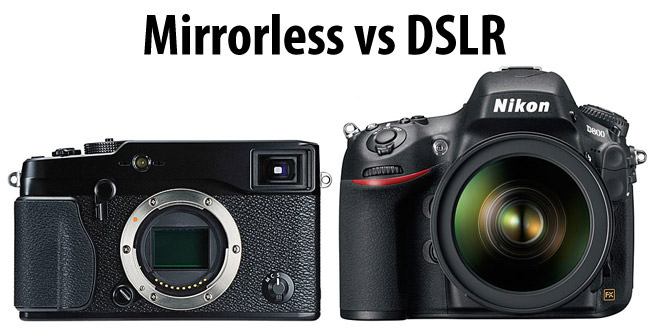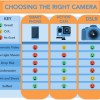Reflections on Mirrorless Cameras
Sparksight is built on creativity. We live it every day with our photography, live streaming, animation, and video production and the tools we use to create and deliver for our clients matter greatly to us. That’s why it is important for us to pay attention to new trends in the world of creative tools. And right now, that trend is definitely the massive improvements happening in the world of HD and 4K cameras.
When Sparksight was founded in 2007, we were still using 3 chip, professional grade ENG video cameras. These cameras were great because they could take professional audio via XLR ports, they had large recording capacity and they shot in the industry standards of the era – 720p and 1080p. We owned several Canon, Panasonic, and Sony ENG camcorders and they were great for what they did, but around 2010, everything started to shift away from the “flat” look of the camcorder to the more artistic look of digital SLR cameras. DSLRs could give you the option to use different lenses and achieve a look that had previously been reserved for film cameras. DSLRs are smaller than camcorders and are more about the glass (lens) you use than the actual camera itself. We shifted over to DSLR cameras around that time and rarely use the old camcorders anymore, but today, that is changing again. The DLSR is slowly evolving into what people are calling the “mirrorless SLR”. That name is actually not accurate, because by taking out the mirror, it is technically not an SLR any longer, but whatever. One analogy that I like to make is how flat screen televisions came in and wiped out the old tube televisions. You could accomplish the same thing in a smaller, lighter and more technically advanced package with a flat screen. I believe that mirrorless cameras will do the same thing to the traditional DSLR.
Mirrorless cameras have all the advantages of a DSLR without the heft and with more room for technology. You can accomplish very shallow depth of field, use a wide variety of lenses, and easily adjust for a wide variety of conditioning. You can accomplish all this with a longer battery life and less mechanical “stuff” to break. It has taken a few of them a while to get into the race, it seems that the big announcements from all the major camera manufacturers these days center around mirrorless cameras. While this is not an in-depth comparison of these cameras, here is a quick overview of each camera manufacturer’s offerings and what we at Sparksight like or don’t like about it.
Types of Mirrorless Cameras
First off, let’s talk Panasonic. The Panasonic GH5 was one of the first mirrorless cameras built for video first and photos second. The GH5 has dual card slots and works with both Panasonic and Olympus lenses, which gives you a wide variety of lenses to choose from. It has a flip around screen for shooting “selfie/VLOG” video. And, most unique to it, it does not have a time limit on how long you can record a single file. Most DSLR and mirrorless cameras won’t record more than 20 or 30 minutes at a time without having to stop recording. I have often wondered why this is and discovered that it is not a technical limitation, but it has to do with import taxes. If a company imports a camera as a still camera first and video camera second, they save money on import taxes. This delineation is determined (at least partly) by how long the camera can record for without stopping. Panasonic states that the GH5 is a video camera first and a still camera second and therefore it can record a single file for as long as you have space on your memory card! The GH5 also include in-camera stabilization, which can make a big difference if you are shooting video on the move. Overall the GH5 is a great choice if video is your primary use and photos are secondary.
Next on the list is the Sony A7 iii. This camera took the market by storm in 2018 and had a huge buzz with VLOGGERs, YouTube stars and professional photographers alike. The SonyA7 iii shoots uncropped 4K and has an amazing auto focus. With dual card slots and a wide variety of lenses, it is a good balance between video and photos. The one area where Sony didn’t shine with the A7 iii is in the on-board monitor. The screen is limited to small angle adjustments and can not be flipped around for VLOGGING or if you are filming yourself. For many Youtubers, this is a killer deal, but if you spend most of your time behind (rather than in front of) the camera, the Sony A7 iii is a solid choice.
The next camera to mention is the recently released Canon EOS-R. This mirrorless camera has a sleek, modern design and a unique new set of lenses. The EOS-R is also the most expensive camera we’ve mentioned so far, but there is a reason for the price! The EOS-R can be easily adapted to use your existing Canon lenses and works easily with them. It also has that flip out/around screen that VLOGGERs love! Canon also includes some cool features like a ring on the lens that can be programmed to change different settings right from the lens. This can be ISO, white balance, and other commonly changed settings, but with innovation comes some compromise. The EOS-R only has one card slot and the 4K video has a crop factor of almost 1.5, which means when you shoot 4K, your wide-angle lenses won’t look quite so wide. As mentioned earlier, this is the most expensive option of the bunch.
There are also some great mirrorless offerings from other companies like Nikon, but I have not played with those and can’t speak to them yet. And for the record, after all this research, we bought the Panasonic GH5. It seemed like the best fit for our video production needs.
Remember that these are not simple point-and-shoot cameras that we are discussing. These are serious creative tools for hobbyists and creative professionals. Each camera has an amazing capacity for photos and video – supported by more computing power than the first manned trip to the moon. If you go for a mirrorless camera, it’s a great idea to study the manual, read reviews, watch online tutorial videos, and most importantly – play with the different buttons. Software and firmware updates can make a huge difference in the performance of these cameras too, so be sure to check for these updates frequently online. These are all great cameras but are suited to the needs of different users in different ways, and best of all, they all have simulated shutter sounds, in case you miss the sound of the mirror moving up and down!
What camera do you use for your projects? What do you like about that camera? Or if you are shopping around – What cameras are you looking to purchase next?
Leave your comments below!







